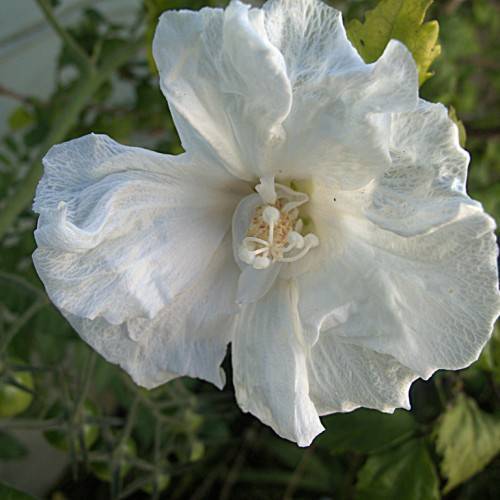
rose of Sharon
Hibiscus syriacus 'Diana'
Cycle:
Perennial
Watering:
Average
Hardiness Zone:
5 - 8
Flowers:
Flowers
Sun:
Full sun,part shade
Leaf:
Yes
Growth Rate:
Moderate
Maintenance:
Low
Drought Tolerant:
Yes
Care Level:
Medium
watering
When watering a Rose of Sharon or Hibiscus syriacus 'Diana', water it deeply and slowly about once a week, making sure the soil around the root zone becomes moist but not soggy. In order to check if the plant needs watering, place your finger at least 2 inches deep into the soil. If the soil feels dry, water it. If the soil feels damp and cool, it doesn’t need any more water. It is important to note that you should water the soil and not the plant’s leaves and flowers. During the summer, when the temperatures are hot and the plant is actively growing, you may need to water more frequently.
sunlight
Rose of Sharon plants prefer full sunlight, at least 6 hours per day. When grown in partial shade, the plant may not bloom as much or have as many blooms as when grown in direct sunlight. Rose of Sharon also does best in morning sunlight, while some afternoon shade is needed to prevent sunburn. When grown in areas with intense heat, afternoon shade should be provided.
pruning
Rose of Sharon should be pruned during late winter or very early spring, before new growth begins to appear. Pruning should be light, no more than 1-third of the total growth being removed, as the shrubs are prone to die back in response to heavy pruning. Growth should be removed just above an outward- facing bud, and all dead, diseased or damaged branches should be removed. Cuts should be made at a 45 degree angle just above the bud so that it can capture water and sunlight for proper healing.
